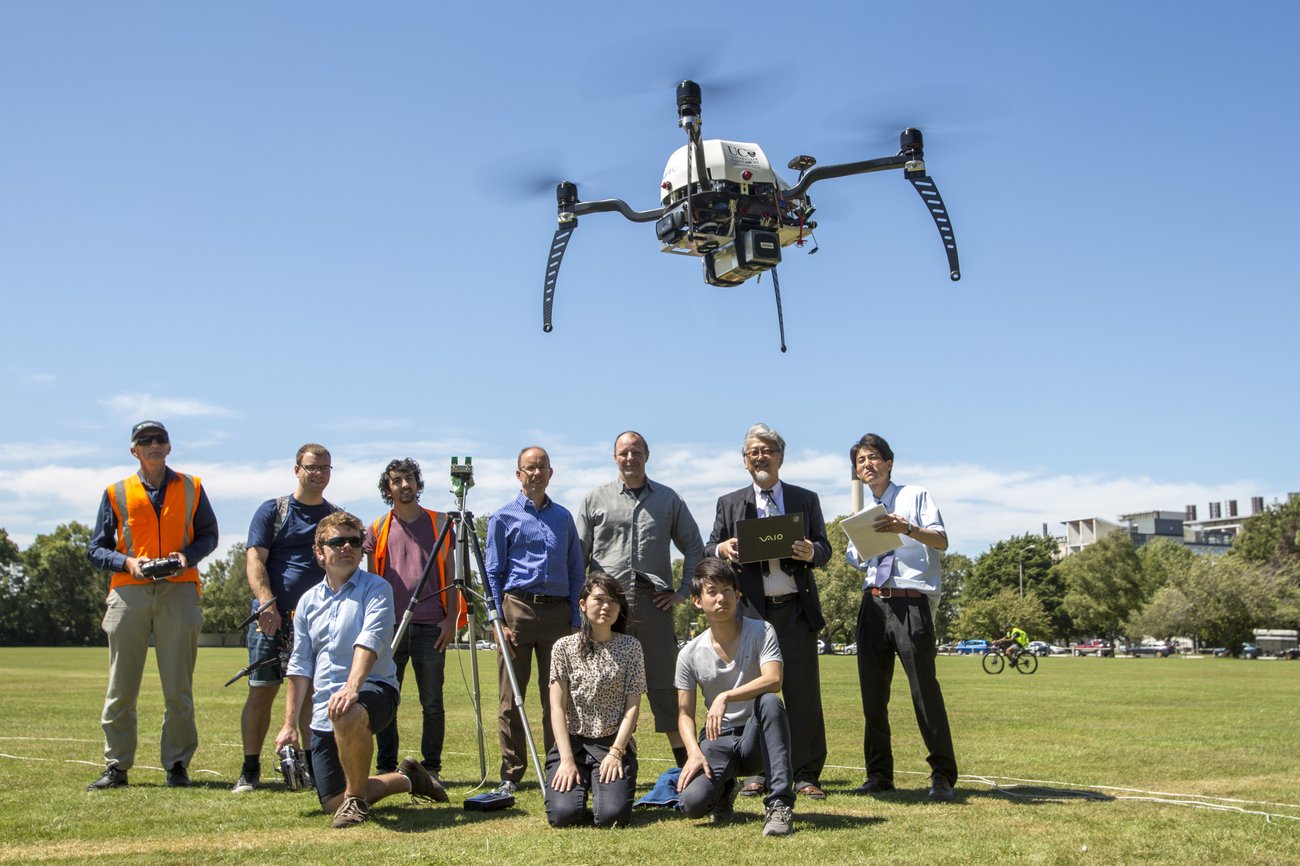Chainsaw drones can kill, so UC is instead developing drones that save lives

Let’s just get this out of the way: when we think of “drone swarms,” we usually think of killer robots out to end our existence a la the Terminator film series or dystopian sci-fi novels. And let’s be real here: those are some pretty negative images that make most of us more than a little uneasy about the idea of drone swarms becoming a reality.
But rather than being used for military missions to hunt down and kill people (which we tend to hear about often in the news), drones can also literally save our lives – and there’s a group of New Zealanders working to make them better at doing just that (and maybe change our perception of drones in the process).
University of Canterbury researchers are working with Japanese colleagues to develop technologies that will enable swarms of drones to locate and potentially triage people buried in the wreckage and debris of natural disasters. The University of Canterbury’s Wireless Research Centre (WRC) has been hosting Professor Ryuji Kohno and research colleagues from Yokohama National University. The Japanese researchers are collaborating on the use of drones, or Unmanned Aerial Vehicles (UAVs), for search and rescue in large-scale emergencies.
WRC research leader Dr. Graeme Woodward says researchers from the new UC DroneLab and their Japanese collaborators are developing technology to enable swarms of drones to locate people in need of help by flying over major disaster areas after events like earthquakes and tsunamis. The establishment of the DroneLab coincided with a call for proposals from the Japanese Society for the Promotion of Science and the Royal Society of New Zealand to work in technologies that can assist in major disasters.
Woodward, Dr. Andreas Willig and Kelvin Barnsdale from UC joined Kohno to propose using swarms of drones to fly over designated disaster areas to locate and retrieve information about injured or trapped people. “Professor Kohno has significant expertise in Body Area Networks (BANs) which are the devices the drones would use both to locate casualties and to collect data about the status of those located,” explains Woodward. “BANs are interconnected devices which are either implanted, attached or carried on the body. Examples are sports applications where a chest strap is connected to a wristwatch to determine heart rate, or a motion sensor measures footsteps and sends the data to another device.”
Woodward says WRC researchers are looking at different ways a BAN signal could potentially be located by the swarm, and also at the different types of signals that could be identified. The research has two objectives: to use multiple drones to locate people under rubble, and to collect information contained in the BANs those people might be wearing.
Another aspect of the research is around operation of the swarm. Normally, a single pilot controls a drone, while another person operates the camera mounted underneath the drone. “We don’t want to replicate that with a whole swarm,” says Woodward. “Ideally, we would want one or two people to control the swarm which must be able to operate autonomously, while the drones also need to be able to communicate between themselves.”
The team is also looking for other projects that could save lives. “We are also looking for complementary projects that can provide further funding to develop drone swarm capabilities, and have had some success with Scion around detection and monitoring of hotspots in bushfire situations,” says Woodward.
The research comes at a time when the capabilities of drones are expanding far beyond the military and entertainment areas. For instance, there’s work being done that could potentially one day see bees replaced with pollinating drones (which would hopefully end better than an episode of the TV show Black Mirror).
China is also investing heavily into drone technology to help save lives after natural disasters, particularly earthquakes, because drones can get to hard-to-reach areas (such as remote mountain villages) and enter places too unsafe for human or animal rescuers. And the recent Super Bowl halftime performance by Lady Gaga – which featured a swarm of 300 Intel Shooting Star drones – has sparked more than a few discussions about the capabilities of drones thanks to the massive number of people that saw the performance (more than 100 million people in the United States alone saw it on TV) – even though the drone swarm was pre-recorded.
In sum, it seems humanity is determined to avoid the mistakes of Hollywood and paperback sci-fi when it comes to our use of drone technology to keep us safe. And to warn us about the danger of things going wrong, we’ve fortunately got some clearly completely sane people telling us about the grave danger we all face. Could be helpful if we ever find ourselves being chased by a chainsaw-wielding autonomous unmanned aerial vehicle.




